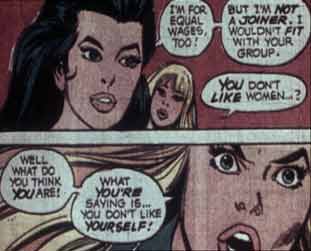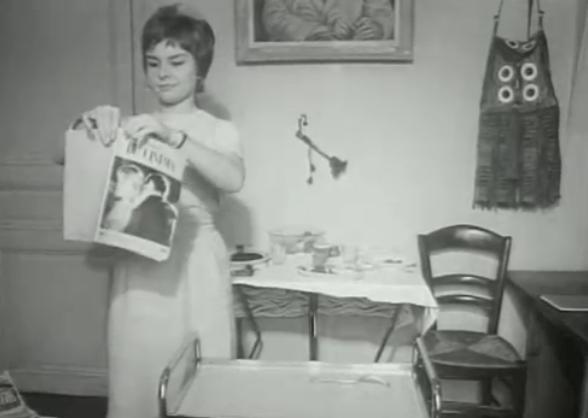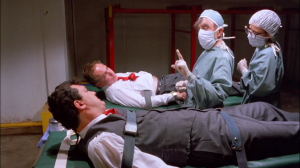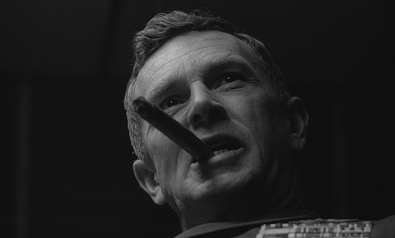Written for the special 50th anniversary issue of the Finnish film magazine Filmihullu, published in November 2018. “The ‘rules of the game’ are simple,” wrote the editor-in-chief, Lauri Timonen. “Seize the day and choose your all time favorite film scene – just one scene, from any film ever made – and write a maximum of 2000 letters (i.e. one page / A4) about it and why that moment in time is so special to you.” — J.R.
The restaurant scene in PlayTime
Jonathan Rosenbaum

My scheme for cheating a little on your assignment is to select what I shall call “the restaurant scene” in Jacques Tati’s PlayTime — a scene or sequence, in short, that actually comprises almost half of the entire film, or at the very least more than a third of the running time. It’s not even certain when this sequence actually begins — does it start with various street pedestrians watching the last-minute construction of the establishment, or does it begin more properly with the restaurant’s official opening? — but I will assume that it ends with one of the few antirealistic gags in the film, the early-morning crowing of a distant rooster, as various restaurant customers stagger out into the street. Read more
From Monthly Film Bulletin, December 1974 (Vol. 41, No. 491).
I must admit that the hyperbole of the last couple of sentences here embarrasses me now. But readers can judge for themselves, because this first feature by Laura Mulvey and Peter Wollen has recently become available as an extra on the BFI DVD of Riddles of the Sphinx. –- J.R.
Great Britain, 1974 Directors: Laura Mulvey, Peter Wollen

The film is composed of five sequences, each preceded by a quotation. 1: “Ghost white like a not yet written page” (Mallarmé, “Mimique” ): A mime of Kleist’s Penthesilea, filmed in long shot from a fixed camera position. 2: “The shadows sprinkled in black characters” (Mallarmé, “Quant au livre”): A lecture on Kleist’s play, the myth of Penthesilea and the theoretical basis of the film, delivered by Peter Wollen while moving about a terrace and adjoining living room, the camera tracing an independent trajectory within the same confined space and occasionally approaching the index cards of notes left behind by Wollen at various stages in his route. 3: “Blazons of phobia, seals of self-punishment” (Lacan, after Vico): A succession of images relating to Penthesilea and the Amazons — paintings, sculptures, artifacts, tapestries, etc., Read more
From Monthly Film Bulletin, September 1976, , Vol. 43, No. 512. I believe that this is the first time I wrote about Moullet. — J.R.

Steack Trop Cuit, Un (Overdone Steak)
France, 1960
Director: Luc Moullet

Cert-U. dist–Connoisseur. p.c–Les Productions Luc Moullet/Les Productions Georges de Beauregard. p–Georges de Beauregard. 2nd Unit d–Pierre Guinle. sc–Luc Moullet. ph–André Mrugalski. 2nd Unit ph–Raymond Cauchetier. ed–Agnès Guillemot. 2nd Unit ed–Maryse Siclier. a.d–Luc Moullet. m–Frédéric G. Ploumepeux. English titles— Mai Harris. sd–Marielle Lesseps. cooking adviser–Alberta Laguioner. /.p–Françoise Vatel (Nicole), Albert Juross (Georges), Jacqueline Fynnaert (Françoise), Raymond N. Quinneseul (Samuel). 1,739 ft. 19 mins. Subtitles.

Returning home from school, Georges protests angrily to his older sister Nicole that she hasn’t yet prepared dinner. With both their parents away, she is in control of his pocket money, and threatens not to give him any for Sunday after he behaves boorishly. Claiming that the steak she has cooked is inedible, he goes next door and borrows sausages from their neighbour Françoise, which he gets Nicole to prepare. Afterwards, he plays footsy with Nicole at the table and talks to her while she puts on make-up and changes clothes, preparing to go out on a date. Read more
This is the Introduction to the fifth section of my first collection, Placing Movies: The Practice of Film Criticism (University of California Press, 1993). I’ve taken the liberty of adding a few links to some of the pieces of mine mentioned here which appear on this web site. — J.R.

From a journalistic standpoint, what movies are about is always important, but the roles that should be played by content in criticism are not always easy to determine. Ever since I started writing regularly for the Chicago Reader in 1987, my principal professional safety net — what helps to guarantee that I’ll remain interested in my work on a weekly basis, even if the movies of a given week are not interesting — is my option of writing about the subject matter of certain films. This almost invariably involves a certain amount of short-term research, because even if I already know the subject fairly well, a refresher course in certain specifics is generally necessary. (A good example of this would be the reading and listening I had to do in order to nail down many of my facts and examples for “Bird Watching,” in spite — or should I say because? Read more
From Film Quarterly (Summer 1979). Sad to say, the Aldrich and Ophüls books are now so scarce that I couldn’t even find their jacket illustrations on the Internet until a reader, Luke Aspell, generously furnished them to me. –- J.R.



ROBERT ALDRICH. Edited by Richard Combs. London: British Film lnstitute, 1978. $3.25.
POWELL, PRESSBURGER AND OTHERS. Edited by Ian Christie. London: British Film lnstitute, 1978. $4.50.
OPHÜLS. Edited by Paul Willemen. London: British Film lnstitute, 1978. $3.50.
Perhaps the most striking difference between the current batch of British Film Institute monographs and the previous series issued under the now-defunct aegis of Cinema One (a joint effort of the BFI and the English publisher Secker & Warburg) is the relation of each to academic film studies. The Cinema One books, designed as popular laymen’s introductions to relatively obscure subjects, were lavishly illustrated with stills and frame enlargements, appeared both in paperback and hardcovers, and rarely proceeded beyond the format of one critic per subject.
The new line of BFI books, which appear only in paperback, are much closer to academic “casebooks”: the texts are usually longer, illustrations are omitted (apart from black-and-white stills on the covers), and the critical perspectives in most cases are multiple. Read more
From the Chicago Reader (December 17, 1993), also reprinted in my collection Movies as Politics. — J.R.

SCHINDLER’S LIST
*** (A must-see)
Directed by Steven Spielberg
Written by Steven Zaillian
With Liam Neeson, Ben Kingsley, Ralph Fiennes, Caroline Goodall, Jonathan Sagalle, and Embeth Davidtz.

The ideological structures of Spielberg’s films “hail” the spectator into a world of the obvious that affirms the viewer’s presence (even while dissolving it), affirms that what the viewer has always believed or hoped is (obviously) right and accessible, and assures the viewer excitement and comfort in the process. The films offer nothing new beyond their spectacle, nothing the viewer does not already want, does not immediately accept. That is their conservative power, and it has spread throughout the cinema of the 80s. — Robert Phillip Kolker, A Cinema of Loneliness (1988)
Confessions are in order. From Duel to Jurassic Park, there are few Steven Spielberg movies I admire, and none I fully respect — though I respond to a good many of them as obediently as any well-oiled automaton. My first look at Close Encounters of the Third Kind actually brought tears to my eyes. I can’t say that on reflection I felt much pride in this response, though the experience of becoming a boy again in relation to the imagined parental benevolence of the cosmos — which also happens with Ray Bradbury’s best early tales about Mars — may be morally preferable to feeding on the murderous xenophobia of Star Wars, released the same year (1977); at worst one winds up feeling silly rather than dirty afterward. Read more
My column for Caimán Cuadernos de Cine, written on September 23, 2015. — J.R.


Early last September, the first week of my visit to Croatia was occasioned by Tanja Vrvilo’s ninth annual “Movie Mutations” event in Zagreb, this time devoted to Godard. An illuminating highlight was the visit of Fabrice Aragno, Godard’s cinematographer and all-around technical assistant since Notre Musique. And my last three days in Croatia was a social visit to Oja Kodar at the Villa Welles in Primosten. Kodar was Orson Welles’ muse, companion, and major collaborator over the last two decades of his life, and, I’m proud to say, a valued friend in the three decades since then.
Both Kodar and Aragno qualify as the sort of major collaborators who complicate and even confound the sort of solid auteurist profiles that we usually associate with both Welles and Godard — profiles that we also paradoxically associate with their uncanny capacities to engage with the creative imaginations of their viewers. (“I like to think of myself as an airplane, not an airport.” Godard once said to me in a 1980 interview, implying that the proper destination of one of his films is the spectator and where he or she wants to go, not Godard and his own preferred destination — and the same “open” and interactive principle applies to Welles and his own films.) Read more
From the Chicago Reader (June 2, 1989). — J.R.

INDIANA JONES AND THE LAST CRUSADE * (Has redeeming facet)
Directed by Steven Spielberg
Written by Jeffrey Boam, George Lucas, and Menno Meyjes
With Harrison Ford, Sean Connery, River Phoenix, Denholm Elliott, Alison Doody,
Julian Glover, and John Rhys-Davies.

Nazis are fun! Jesus is fun! Arthurian legends are fun! Third world countries are fun! Caves are fun! The Holy Grail is fun! Lots of snakes and rats and skeletons are fun! Chases are fun! Narrow escapes are fun! Explosions are fun! Indiana Jones is fun! Indiana Jones’s father is fun!
Put them all together and you get the third panel in Steven Spielberg and George Lucas’s Indiana Jones triptych — more fun than a barrel of monkeys (or Nazis, chalices, snakes, rats, skeletons — whatever). Though Hitler, Jesus, women, the third world, and, by implication, most of the rest of civilization ultimately take a backseat to the uneasy yet affectionate relationship between a grown boy and his dad — and all those millions of people exterminated by the Nazis (for instance) don’t even warrant so much as a look-in — this is nothing new in the Lucas-Spielberg canon; it isn’t even anything new in movies. Read more
From the Chicago Reader (November 3, 1989). — J.R.

Whether or not this goofy black comedy is a total “success” is debatable, but you’ve got to admit it’s pretty different from anything else around. Postmodern comic magicians Penn Jillette and Teller play themselves in a script of their own devising that is deftly delivered by director Arthur Penn (Bonnie and Clyde, Night Moves). After Jillette brazenly announces on national TV that his life would be more exciting if someone tried to kill him, a bizarre series of murder attempts ensues during an engagement in Atlantic City, but it becomes increasingly difficult to determine who’s pulling the strings. Deconstructing illusion, Penn and Teller’s stock in trade, becomes the modus operandi of the plot — like a farcical version of House of Games, with heaps of good-natured gore added and a literally unbelievable grand finale — and the dynamic duo make the most of it. With Caitlin Clarke, David Patrick Kelly, Leonardo Cimino, and Celia McGuire. (Biograph)
 Read more
Read more
From The Soho News (June 11, 1980). Note: The “Hollywood assistant” quoted below was Meredith Brody, working at the time for A-Team. — J.R.

Underground U.S.A.
A film by Eric Mitchell
St. Mark’s Cinema, midnight

“Sometimes I think most of the ’70s is being spent in
cars, discussing remakes,” a Hollywood assistant once
woefully remarked to me. She didn’t know how lucky she
was. Sometimes, in my less happy moods, I think that
most of the 80s will be spent in theaters, watching the
same remakes that were being discussed in the ’70s.
Willie & Phil –– Paul Mazursky’s remake of Jules and
Jim, set in the American ’70s — isn’t opening for a couple
of months yet. John Carpenter’s The Fog and several
other recent quickies have already remade Carpenter’s
Halloween, which was itself a partial remake of The Thing
(which Carpenter is now planning to remake more directly).


And to round off this minisurvey of new, original
thinking (if you want to exalt the conventional, call it
classical), the new Eric Mitchell film, the l6mm
Underground U.S.A., which already sounds like a remake
of Sam Fuller’s Underworld U.S.A. — is actually
described in its own pressbook as a remake of a remake:
“Taking the classic theme of Sunset Boulevard seen
through Heat,” Underground U.S.A Read more
From the Toronto Festival of Festivals program (September 10-19, 1981).
To quote from my long review of Pulp Fiction and Ed Wood (which can be accessed on this site), “Fourteen years ago, when the Toronto film festival still had a sidebar called ‘Buried Treasures,’ selected each year by a guest critic, I was invited to take over that slot. I put together a program called ‘Bad Movies,’ intending to play with the ambiguity of the word ‘bad’ — the only thing these films had in common, apart from the fact that I liked them, was that each of them had been pegged with that label at some point….
“This was the theory, at any rate — that all my selections were good movies that had wrongly been considered bad. But in practice, the single smash success of the series, in terms of both attendance and audience response, was Wood’s Glen or Glenda?, a film appreciated by the audience only for its badness. And since then, the evidence increasingly provided by movie fanzines — which by now far outnumber “serious” film magazines — is that among film cultists, bad movies are immensely more popular than good ones. Or, to put it in more concrete terms, at that festival the North American premiere of the penultimate, two-part masterwork of Fritz Lang, [The Tiger of Eschnapur and The Hindu Tomb], one of the greatest filmmakers who ever lived, was much less popular than the latest replay of a low-budget exploitation item by an inept amateur. Read more
From the Chicago Reader (November 12, 1999). — J.R.

Romance
Rating *** A must see
Directed and written by Catherine Breillat
With Caroline Ducey, Sagamore Stevenin, Rocco Siffredi, and Francois Berleand.

I’ve never put much stock in my powers of prophecy, but it seems I was more off the mark than usual nine months ago when I emerged from the world premiere of Catherine Breillat’s Romance, in Rotterdam, thinking it would create a sensation if it reached the U.S. I somehow forgot that most movie sensations are the fabrications of publicists. Audiences can create sensations — The Blair Witch Project proves that — but reviewers, who are usually closer to publicists than to audiences, are often the last people to notice. So maybe Breillat’s seventh feature did cause a sensation with audiences when it opened in New York several weeks ago, but if so, I don’t think it’s been reported.
Nine months ago I decided that Romance was a pretty reactionary movie for France — mainly because of an offscreen statement made by the heroine near the end (“They say a woman isn’t a woman until she’s a mother; it’s true”). But I still thought it might be seen as progressive in America, especially because its rare confluence of cinematic taste, literary intelligence, and hard-core sex might undercut the crippling puritanism of our movie codes, which usually equate eroticism with porn, sleaze, and stupidity rather than, say, art, health, and intelligence. Read more
From the Bard Observer, March 30, 1964. The greatest teacher I’ve ever had, by far, was Heinrich Blücher, the husband of Hannah Arendt, who taught for many years at Bard College, and this was one of the two pieces of mine in the Bard Observer that he made a point of telling me that he liked. (The other one was an extended personal report on the Montgomery March that had appeared the previous spring.) From my present vantage point, I think this may have been my first really serious film review. I’ve done a light edit on it while transcribing it. -– J.R.

“Doctor Kubrick”: or How I Stopped Worrying and Learned to Love the Movie
By JON ROSENBAUM
The story is from Peter George’s Red Alert….A crazy American general sends a squadron of nuclear bombers to get in a first strike at Russia; after frantic efforts and unspeakable confusion, the American President manages to recall or have destroyed by the Russians all but one; this gets through and drops its bomb, which triggers off a nuclear death belt the Russians have secretly contrived; the picture ends with the world due to follow shortly.
— from a review of Dr. Read more

From the April 1, 1992 Chicago Reader. — J.R,
Part of what makes this wartime Hollywood drama (1942) about love and political commitment so fondly remembered is its evocation of a time when the sentiment of this country about certain things appeared to be unified. (It’s been suggested that Communism is the political involvement that Bogart’s grizzled casino owner Rick may be in retreat from at the beginning.) This hastily patched together picture, which started out as a B film, wound up getting an Oscar, and displays a cozy, studio-bound claustrophobia that Howard Hawks improved upon in his superior spin-off To Have and Have Not. Then again, we get Humphrey Bogart, Ingrid Bergman, Claude Rains, Paul Henreid, Conrad Veidt, Sydney Greenstreet, Peter Lorre, Marcel Dalio, and S.Z. Sakall, and Dooley Wilson performing “As Time Goes By”. PG, 102 min. (JR)
Read more
“A movie pours into us. It fills us like milk being poured into a glass.” — John Updike

| |
I must confess that the prospect of viewing a recent two-and-a-half-hour documentary (a recent DVD release of Second Run in the U.K.) about P. K. Nair, the fanatically devoted archivist who helped to found India’s National Film Archive in 1964, didn’t fill me with eager anticipation; the whole thing sounded somewhat esoteric and remote. But in fact, Shivendra Singh Dungarpur’s compulsively watchable and consistently entertaining Celluloid Man (2012) kept me enraptured throughout, not least for its evocations of cinema as a whole and not merely Indian cinema. Early on, when we see Nair addressing us in front of a screen showing Citizen Kane with French subtitles, followed a little later by the opening strains of the film’s soundtrack, it becomes obvious that the critical issues and passions informing Nair’s life are very close to those of his principal mentor, Henri Langlois. And even though the film has a lot to say and show us about the history of Indian cinema, personal and anecdotal (e.g., Ritwik Ghatak’s drinking habits and viewing tastes, Nair’s own history) as well as industrial, it’s the cinema as a whole and why it matters that provides its ultimate framework. |
Read more




























